
Chances are, if you’re reading this, you are considering making your own dishwashing soap. If you’re NOT and you stumbled upon this and became curious, let me tell you why you SHOULD make your own dishwashing soap liquid.
Reasons I started making my own dishwashing soap:
-
- Most store bought dish soap have crazy scary chemicals. I could say SO much about the awfulness of them (like that they have a multitude of ingredients that are carcinogenic, that they can cause respiratory problems and skin issues and SO MUCH MORE) but instead of writing a research paper about why they are awful, I’ll let this article give you a synopsis: https://www.treehugger.com/cleaning-organizing/your-dish-soap-toxic-heres-what-look.html. For more information check out this website: http://www.ewg.org/release/spring-cleaning-ewg-s-tips-what-use-and-what-avoid#.WdMmzo9SzIV
-
- Cheap store bought dishwashing soap dries my hands out really bad. Not only that, it makes my hand gets flaky and they crack so bad they bleed. Yeah, not fun AT ALL.
- I wanted to save money on buying dish soap by making it myself. Ever since reading the Miserly Mom’s book, who encourages her readers to DIY as much as possible to save money, I felt inspired to try making my own because who DOESN’T want to save a few bucks? Here’s the link for her book, if you want to check it out: Miserly Moms: Living Well on Less in a Tough Economy
Unfortunately, this is one of those DIY things that requires much trial and error (at least, for me it did). Finding a recipe that isn’t too runny, isn’t too time intensive to make, and isn’t going to run out in a few days was hard. Plus, I had to make sure it was compatible with hard water since I live in a hard water area. 6 recipes later, and I FINALLY found one that I love! Before I dive into what I tried and how it worked and so on, I want to give some cautionary advice for fellow people living in hard water areas.
Cautionary advice: Hard water and castile soap don’t usually mix well. This isn’t castile soap’s fault. When the castile soap reacts to the high mineral content of hard water, there tends to be a scum left behind on dishes. I live in a hard water area, so this made my journey in finding a good DIY dish soap more challenging. I’ve read you can do a vinegar rinse to combat this. I personally haven’t tried this for the following reasons:
-
- Washing dishes already takes long enough. It’s not my favorite chore (shocking, I know!), so why prolong it by rinsing ALL the dishes in vinegar?
-
- I don’t really like the smell of vinegar (of course, who does?). Having it on my dishes as a rinse kind of makes me gag a little just thinking about the smell of it. What about the dishes too? Does it really all just magically dry off and not leave any kind of remnant smell or taste on the dishes?
- If I have to do a vinegar rinse, then WHY am I even using that DIY dish soap? Shouldn’t it work well enough so I don’t have to do that?
Alright, now that I’ve given you my cautionary advice for those living in hard water areas, let’s get on with it!
6 DIY dishwashing soaps I tried
(pros and cons list of each one)
One thing can be said about each of these dish soap recipes: each one works adequately in that it cleans the dishes. Which, at the end of the day, is the goal. So, they all succeed in the main objective.
The 1st DIY dish soap liquid I tried:

https://www.diynatural.com/homemade-dish-soap/
Ingredients (besides filtered water & essential oils):
–Dr. Bronners Bar Baby Mild Unscented 5oz. Soap
–Twenty Mule Team Natural Laundry Booster & Multi-Purpose Cleaner, 65 oz.
Pros: It works adequately on the dishes in getting them clean, although sometimes there was cloudy residue (which could be due to the hard water in my area) and it took a lot of it to get grease off of dishes. It wasn’t too hard to make. You do have to heat water for it, but then you just pour it over the ingredients and mix, mix, mix! It actually gels and has a fairly similar consistency to ACTUAL store bought liquid dish soap, so that’s pretty exciting.
Cons: I first tried this concoction several years ago. Honestly, it turned me off to wanting to try again at making my own dish soap. Why? Well, first off the directions for it say you can use ANY bar soap. This is not true. The first time I made it I used some cheap bar soap, like Ivory. It did not thicken up AT ALL. So, it was runny as straight water and not very effective. Finally, I tried it again recently, but with Dr. Bronner’s bar soap. WOW, what a difference. Even so, it only lasts a max of 2-3 days for me and my family. In addition, it’s one of those soaps that you have to wait for to set up (6-8 hours to be exact), mixing occasionally during the setting process. Since I’m a wait-til-the-last-minute-to-make-something kind of person, this doesn’t really work out that well for me. Plus, I didn’t like the fact that it had borax. My skin is sensitive and I have heard mixed reviews about using borax so it didn’t seem like a good fit for me. Here’s more about the whole borax controversy if you’re interested: http://www.ewg.org/enviroblog/2011/02/borax-not-green-alternative-its-cracked-be#.WdMrP49SzIU.
Amount made= 14 ounces (about half the amount of an average sized bottle of dishwashing soap at the store)
The 2nd DIY dish soap I tried:

https://www.mom4real.com/homemade-liquid-dish-soap/
Ingredients (besides filtered water & essential oils):
–Dr. Bronner’s Pure-Castile Liquid Soap – Baby Unscented, 32oz.
–NOW Solutions Glycerine Vegetable, 16-Ounce
Pros: This is BY FAR the easiest recipe I have found. All you do is pour the ingredients in an empty bottle, shake a little to mix it up and VOILA! It suds up and get the dishes adequately clean.
Cons: It’s SUPER runny. It doesn’t last longer than a day or a day and a half because of this. It also tends to leave weird cloudy residue on the dishes. I believe that is mainly because I live in a hard water area, which causes the castile soap to react with the hard water, hence the residue. BUT STILL.
Amount it made= 13 ounces
The 3rd DIY dish soap recipe I tried:

https://www.mommypotamus.com/homemade-liquid-dish-soap-recipe/
Ingredients (besides filtered water & essential oils):
–Dr. Bronners Bar Baby Mild Unscented 5oz. Soap
–NOW Solutions Glycerine Vegetable, 16-Ounce
–2 Boxes (55oz ea) Arm & Hammer Super Washing Soda Detergent Booster & Household Cleaner
–Dr. Bronner’s Pure-Castile Liquid Soap – Baby Unscented, 32oz.
Pros: This recipe actually thickened up so it was more like “real” store bought dishwashing liquid. So, that was pretty exciting. It got the dishes really clean as well.
Cons: It’s a little bit of a pain to make because you have to heat the soap and water. After that, you have to wait 24 hours to set up. Then, it only lasted me 3 days. So, it wasn’t really worth it to me to make again. It works, but I had to use a lot to get the grime and grease off of dishes. Part of this could be due to the fact that I live in a hard water area though, so it may work amazing if this wasn’t a problem for me. *sigh* Plus, I usually wait until the last minute to make DIY products as mentioned earlier (in other words, I wait until we have run out, because that’s how I roll) so this wasn’t very convenient since you have to wait for it to set and stir it occasionally during those 24 hours.
Amount it made= 13 ounces
The 4th DIY dish soap recipe I tried (MY FAVORITE!):

Ingredients (besides filtered water & essential oils):
–Dr. Bronner’s Fair Trade and Organic Sal Suds Liquid Cleaner – 32 oz
-Vinegar
-Kosher salt
-Lemon Juice
Pros: It was super easy to whip up and OMG IT GOT THICK! Like EXACTLY like real store bought dish soap liquid. I seriously almost started to cry folks. I don’t know if it was because I didn’t get enough sleep, or because secretly I was missing the thickness of non-DIY dish soap but this was legitimately thrilling! It also worked pretty good and seemed quite compatible with being in a hard water area.
Cons: I went through it in about 3 days. That was the only disappointment. I had hoped, with how thick it was, that it would last longer.
Amount made= 13 ounces
The 5th DIY dish soap recipe I tried:

http://ablossominglife.com/2013/01/new-improved-diy-liquid-dish-soap.html
Ingredients (besides filtered water & essential oils):
–Dr. Bronners Bar Baby Mild Unscented 5oz. Soap
–NOW Solutions Glycerine Vegetable, 16-Ounce
Pros: The ingredients are super basic and this soap gets quite thick. It also works fairly well AND it makes a huge batch. In addition, since it MAKES such a big batch for a small amount of ingredients (you add a lot of water) it wins the ‘best bang for your buck’ award. I don’t think you can make or buy dish soap much cheaper than this recipe. It lasts about 10 days, which is pretty awesome too.
Cons: It has a bit of a slimy consistency. It takes quite a bit extra to get grease and grime off of dishes Also, it makes the dishwater kind of cloudy, but this could be more from being in a hard water area than anything else. Also, this is another heat on the stove and let set DIY. As you know (because this is the third time I’m telling you now) I’m all about instant-let-me-wait-til-the-last-minute-to-make. So, that was kind of a bummer about this recipe.
Amount= Over 32 ounces (nearly 1 1/2 times the amount of the average bottle of store bought dish washing soap)
The 6th DIY dish soap I tried (ALSO MY FAVORITE!!!)


http://www.sheuncovered.com/2015/05/diy-natural-dish-soap/
Ingredients (besides filtered water &essential oils):
–Dr. Bronner’s Pure-Castile Liquid Soap – Baby Unscented, 32oz.
–NOW Solutions Glycerine Vegetable, 16-Ounce
–NOW Sweet Almond Oil, 16-Ounce
-Baking Soda
Pros: To be completely honest, I ALMOST didn’t try this recipe. It was similar to other recipes I tried, so I didn’t think the results would be too much different (aka, it wouldn’t work well in a hard water area). I WAS WRONG. For starters, it’s very easy to whip up. It also suds up quite well and doesn’t leave weird residue on the dishes. It truly works amazing (I think the baking soda is the key ingredient) and it lasts about 5-6 days with a foaming soap dispenser like this one: mDesign Foaming Glass Soap Dispenser Pump, for Kitchen or Bathroom Countertops – Clear/Brushed
Cons: Since I live in a hard water area, the castile soap sometimes leaves some cloudy residue, as with the other DIY dish soaps that have castile soap. But, the baking soda seems to help combat that. In addition, it’s runny. It doesn’t have the consistency of store bought dish soap, so it takes awhile to get used to that. It only lasts about 3 days without a foaming soap dispenser. That being said, when I first made it I didn’t thoroughly read the instructions. It said that you should use it with a foaming soap dispenser. So, my bad.
Amount it made= 13 ounces (about half the amount of the average store bought bottle of dishwashing liquid soap)
So, if you try making any of the DIY dishwashing soaps I HIGHLY recommend trying the 4th and/or 6th one! Both worked great and I still make both on a regular basis. I have found that I prefer the Sals Suds one (#4) for a thorough, residue-free cleaning of dishes. However, the baking soda and castile soap one (#6) is a lot gentler on my hands, so if I find my hands are getting dry (hello, winter!) I use #6 more.
Essential oils I add:

You probably noticed that each recipe of DIY dishwashing soap also included essential oils. While you can really add whatever kind you want, I personally like to use the OnGuard blend through DoTerra: https://www.mydoterra.com/sheabuttersunshinesarcasm/.
For those that are Young Living essential oil users, Thieves is the most similar blend to OnGuard. Literally, the only difference between Thieves and OnGuard’s ingredient lists is that Thieves has lemon essential oil while OnGuard does not. OnGuard has orange essential oil instead, while Thieves does not have orange essential oil. Anyways, I use the OnGuard blend because it smells great, it has grease cutting essential oils in the blend, and it also has essential oils that kill off bacteria and viruses. It’s pretty awesome. That being said, other essential oils that work great in dishwashing soap are citrus oils (like lemon, orange, or lime), melaleuca, peppermint, and lavender.
An all natural dishwashing soap you can buy!
After reading all that, maybe you don’t want to make your own soap. I hear you, it can be a challenge figuring out what works for you and your area. If that’s the case, I’ve found and used a good all natural dish soap called Better Life that you can purchase through this link: Better Life Dish Soap, Unscented, 22 Ounces
Not only does it work, but it has an “A” rating (the highest possible) from the Environmental Working group. This is pretty awesome because this group has high standards in rating products, testing for any possible toxins and carcinogens, and ensuring that a product TRULY DOES have natural ingredients if it claims to have them. The Better Life dish soap is THE ONLY dishwashing soap they recommend in the below article: http://www.ewg.org/release/spring-cleaning-ewg-s-tips-what-use-and-what-avoid#.WdMmzo9SzIV
FINAL CLOSING NOTES/THOUGHTS
Beware of sham DIY dish soaps: DO NOT use a recipe that mixes vinegar with castile soap. I ALMOST tried this. Thankfully, I read enough cautionary blog posts as to why you shouldn’t do this. If you are interested in reading on this topic, all you have to do is google “Don’t mix vinegar with castile soap.” My favorite blog post on it was this one: http://www.lisabronner.com/a-word-of-caution-about-vinegar-and-castile-soap/. Basically, when you mix castile soap (which is a base) with vinegar (with is an acid) they cancel each other out. So, the soap is unsaponified by the vinegar, reducing it to its original oils. Lame. This results in the degreasing and scum cutting power of the vinegar being nullified. So, although it would make for a great science experiment when studying basic chemistry (I’m going to try it with my kids, because why not), it DOES not work for dish soap. So, if you EVER see a DIY dish soap recipe with both castile soap and vinegar, keep scrolling.
Please note: I’m a homeschooling mom with 3 kids so we dirty a lot of dishes every day. I also hand wash a lot of our dishes. For the dishes I don’t hand wash I at least give them a decent scrubbing before putting them in the dishwasher. So, I probably use more dish soap than most. The dish soap recipes would probably last you longer, BUT I still wanted to include how long they last me to give you an idea of what to expect from them.
I know this post was EXTREMELY long so if you read all the way to the end, thank you! I hope you found this information useful.
Have you made your own DIY dish soap before? What recipe did you use? How did it turn out? Or, which of the recipes that I mentioned do you want to try? Please let me know in the comments below.



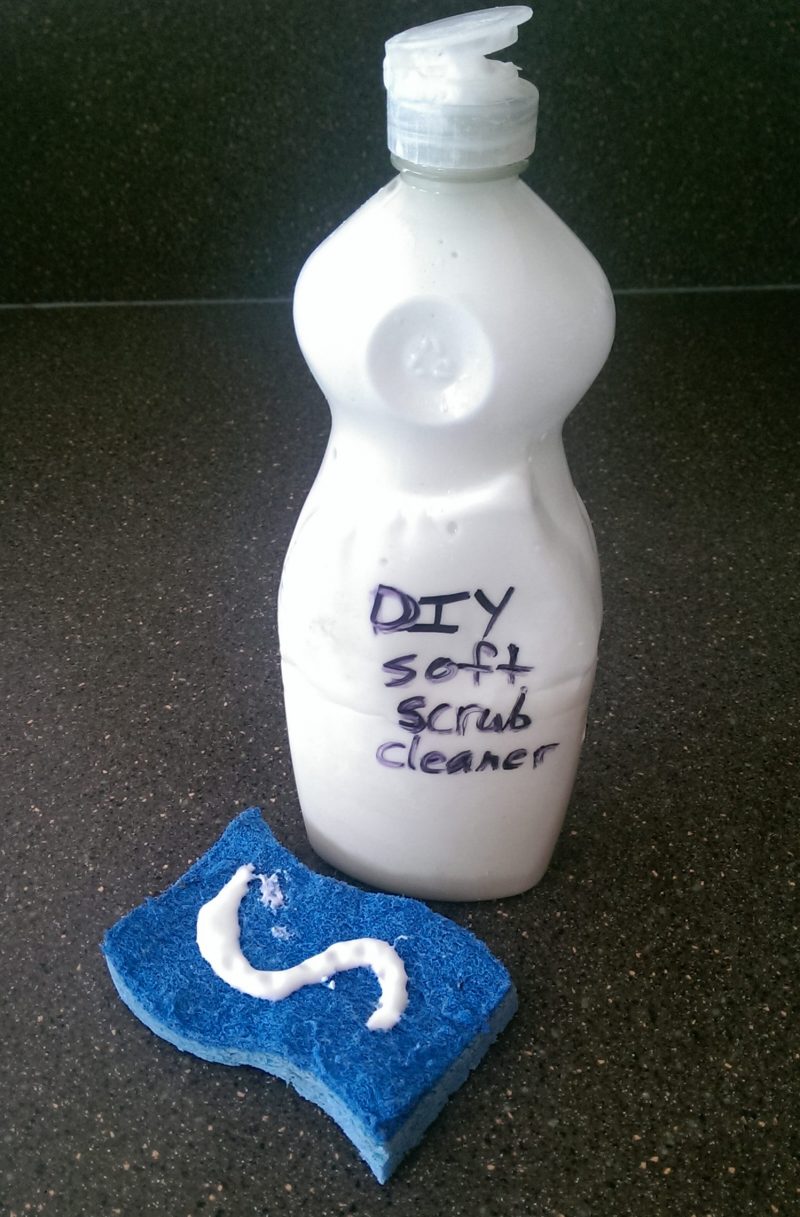

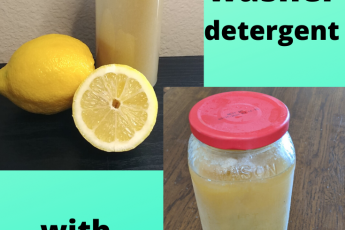




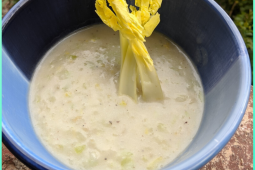
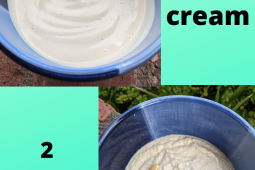

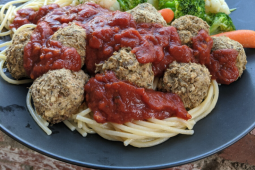
Thank you for testing all those out and sharing your experience. Sharing is caring! I was able to test some of #6 out and it works. I’m looking forward to making my own. 🙂
Oh good, I’m glad you found this post useful. I hope your dish soap making adventures go well. =)